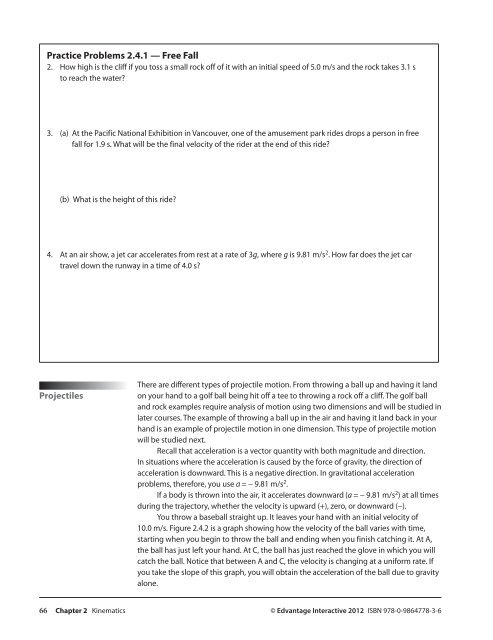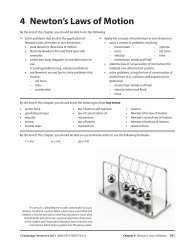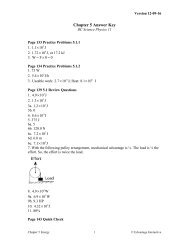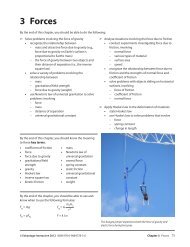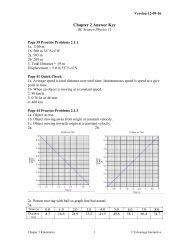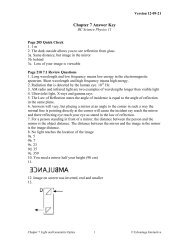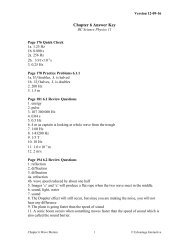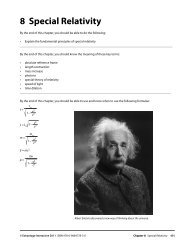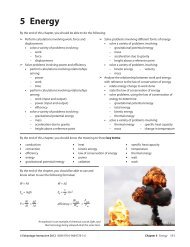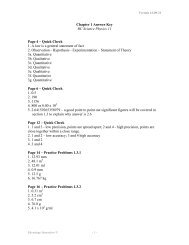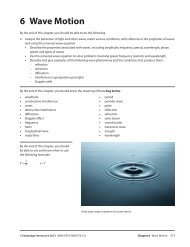2 Kinematics - BC Science Physics 11
2 Kinematics - BC Science Physics 11
2 Kinematics - BC Science Physics 11
Create successful ePaper yourself
Turn your PDF publications into a flip-book with our unique Google optimized e-Paper software.
Practice Problems 2.4.1 — Free Fall<br />
2. How high is the cliff if you toss a small rock off of it with an initial speed of 5.0 m/s and the rock takes 3.1 s<br />
to reach the water?<br />
3. (a) At the Pacific National Exhibition in Vancouver, one of the amusement park rides drops a person in free<br />
fall for 1.9 s. What will be the final velocity of the rider at the end of this ride?<br />
(b) What is the height of this ride?<br />
4. At an air show, a jet car accelerates from rest at a rate of 3g, where g is 9.81 m/s 2 . How far does the jet car<br />
travel down the runway in a time of 4.0 s?<br />
Projectiles<br />
There are different types of projectile motion. From throwing a ball up and having it land<br />
on your hand to a golf ball being hit off a tee to throwing a rock off a cliff. The golf ball<br />
and rock examples require analysis of motion using two dimensions and will be studied in<br />
later courses. The example of throwing a ball up in the air and having it land back in your<br />
hand is an example of projectile motion in one dimension. This type of projectile motion<br />
will be studied next.<br />
Recall that acceleration is a vector quantity with both magnitude and direction.<br />
In situations where the acceleration is caused by the force of gravity, the direction of<br />
acceleration is downward. This is a negative direction. In gravitational acceleration<br />
problems, therefore, you use a = − 9.81 m/s 2 .<br />
If a body is thrown into the air, it accelerates downward (a = − 9.81 m/s 2 ) at all times<br />
during the trajectory, whether the velocity is upward (+), zero, or downward (−).<br />
You throw a baseball straight up. It leaves your hand with an initial velocity of<br />
10.0 m/s. Figure 2.4.2 is a graph showing how the velocity of the ball varies with time,<br />
starting when you begin to throw the ball and ending when you finish catching it. At A,<br />
the ball has just left your hand. At C, the ball has just reached the glove in which you will<br />
catch the ball. Notice that between A and C, the velocity is changing at a uniform rate. If<br />
you take the slope of this graph, you will obtain the acceleration of the ball due to gravity<br />
alone.<br />
66 Chapter 2 <strong>Kinematics</strong> © Edvantage Interactive 2012 ISBN 978-0-9864778-3-6


